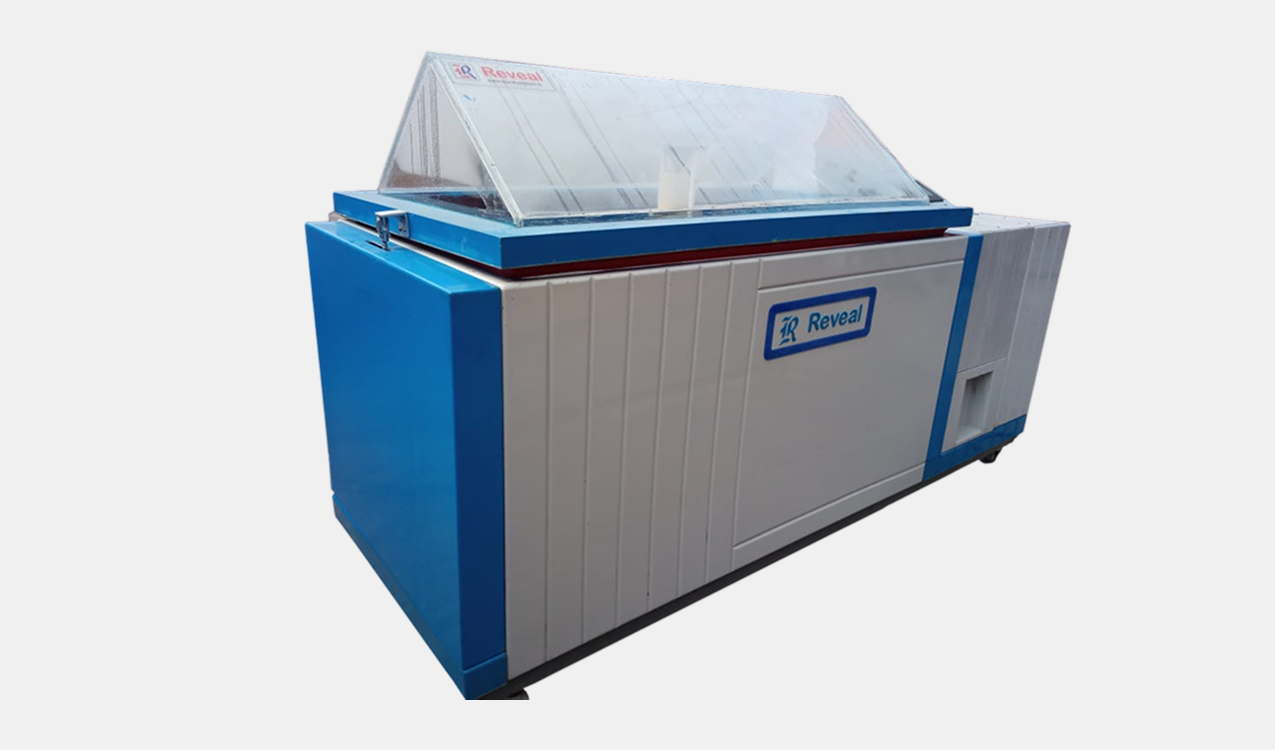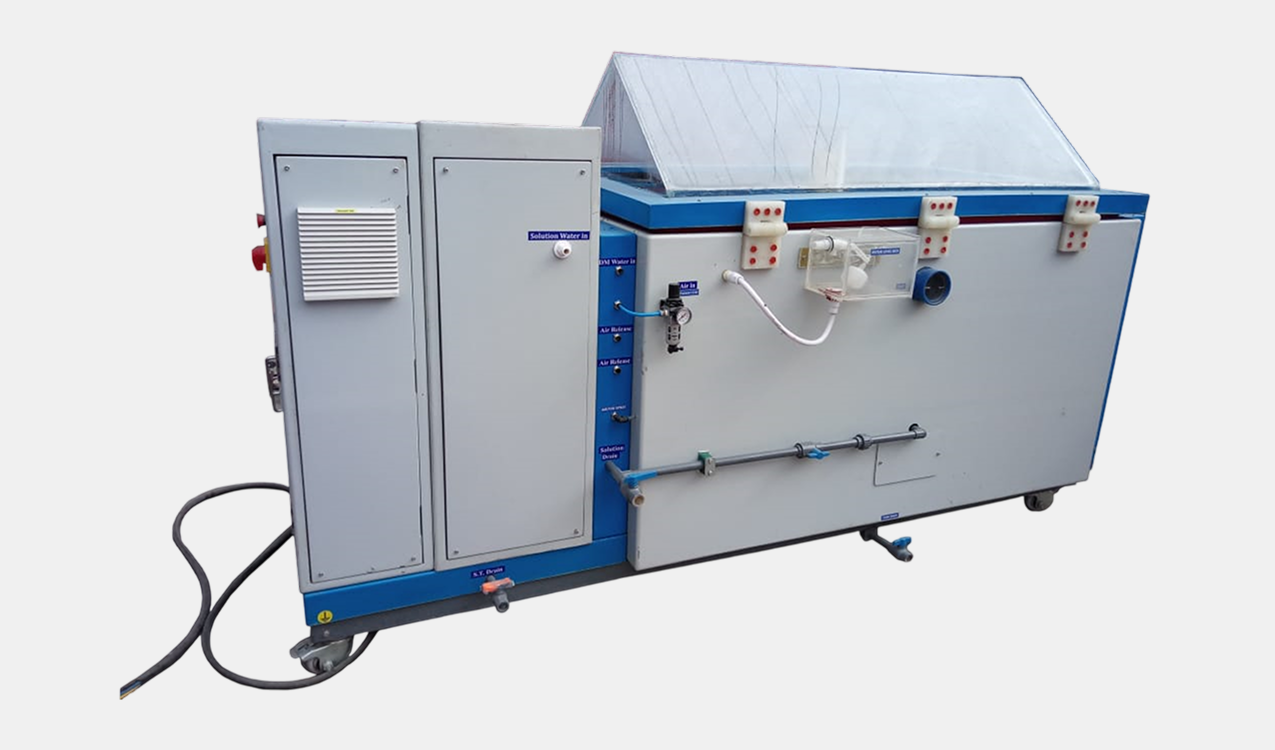Salt Test Chamber, also known as a salt spray chamber or salt fog chamber, is a specialized environmental testing device designed to simulate corrosive conditions by exposing products to a controlled salt-laden mist or fog. This tests a product’s resistance to corrosion, particularly for materials and coatings exposed to saline environments like coastal areas or road salt..
Some Essential Features of Salt Spray Chamber
These chambers are designed for reliability, accuracy, and long-term durability, with several key features:
-
Salt Spray System
- Reservoir: Holds a saline solution (e.g., 5% NaCl for ASTM B117).
- Atomizing Nozzles: Generate a fine mist or fog to disperse salt solution evenly.
- Pump/Compressor: Controls spray pressure and flow rate for consistent exposure.
-
Test Chamber
- A sealed enclosure, typically made of corrosion-resistant materials like stainless steel or reinforced plastics, to withstand salt exposure.
- Sizes range from benchtop units (e.g., 100–1000 liters) for small parts to walk-in chambers for large components.
- Includes racks or fixtures to position specimens at specific angles (e.g., 15–30° for ASTM B117).
-
Control System
- Programmable controllers (e.g., touch-screen or software) to set spray duration, temperature (typically 35°C), and humidity.
- Supports standards like ASTM B117, ISO 9227, or JIS Z 2371.
- Features data logging and remote monitoring.
-
Temperature & Humidity Control
- Maintains stable conditions (e.g., 35°C and high humidity for salt fog).
- Some chambers offer cyclic corrosion testing, alternating between salt spray, dry, and humid conditions.
-
Optional Features
- Cyclic Corrosion Testing: Combines salt spray with humidity, drying, or temperature cycling (e.g., for automotive standards).
- Vibration Integration: Can pair with a shaker (like vibration integrated environmental chambers) for combined corrosion and mechanical stress.
- Walk-in Capability: For large items like vehicle parts or machinery.
Key Applications of Salt Spray Chambers
Salt test chambers are used to test corrosion resistance in:
-
Automotive
Evaluating coatings, chassis, or fasteners for resistance to road salt. -
Aerospace
Testing aircraft components for corrosion in marine or coastal environments. -
Electronics
Validating enclosures or connectors for resistance to salt-induced corrosion. -
Marine
Ensuring ship parts or offshore equipment withstand saltwater exposure. -
Construction
Testing paints, coatings, or metal structures for durability in harsh climates. -
Military / Defense
Verifying equipment under MIL-STD-810 for salt fog resistance.
Standard Models
| Models | Unit | TS-36 | TS-65 | TS-125 | TS-210 | TS-340 | TS-1000 |
|---|---|---|---|---|---|---|---|
| Test Basket Dimension (D/L×W×H) | mm | 300 300 400 | 400 400 400 | 500 500 500 | 600 600 600 | 700 700 700 | 1000 1000 1000 |
| inch | 12 x 12 x 16 | 16 x 16 x 16 | 20 x 20 x 20 | 24 x 24 x 24 | 28 x 28 x 28 | 39 x 39 x 39 | |
| Test Basket Volume | Ltr | 36 | 65 | 125 | 210 | 340 | 1000 |
| Hot Zone Temperature Range | (°C) | Ambient to +220 | Ambient to +220 | Ambient to +220 | Ambient to +220 | Ambient to +220 | Ambient to +220 |
| Cold Zone Temperature Range | (°C) | Ambient to -70 | Ambient to -70 | Ambient to -70 | Ambient to -70 | Ambient to -70 | Ambient to -70 |
| Basket Transition | < 10 sec | ||||||
| Recovery Time | < 5 to 8 min | ||||||



